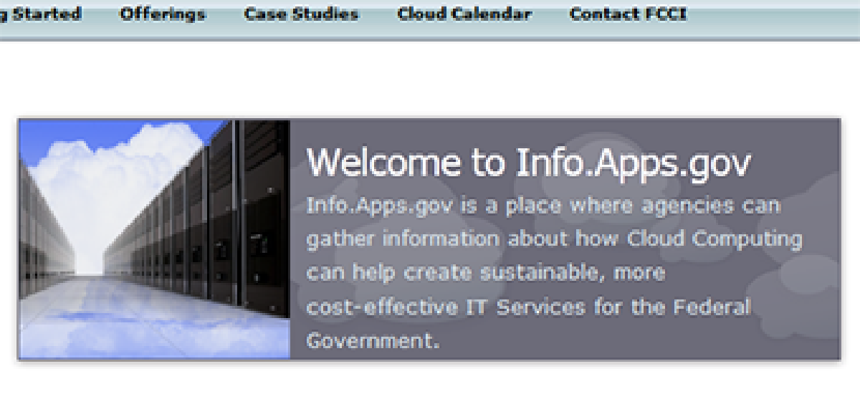What the end of Apps.gov teaches

GSA's experiment with Apps.gov has ended, but the experience may open a door to future success.

GSA's closed Apps.gov has been replaced by a site giving information on cloud computing in the federal government.
The General Services Administration closed the Apps.gov storefront on Dec. 1, but officials can walk away with some insights from the three-year experiment.
Lesson One: Innovation needs purpose and some gusto to keep business moving; Apps.gov did not have much of either, according to several of its critics.
GSA already had a successful site called GSA Advantage, a decades-old and time-tested online procurement system. Apps.gov, launched in 2009, was in many ways just a new face on an old system. Contrary to the name’s implication, it wasn’t primarily for purchasing mobile apps, but for ordering software and services, with an emphasis on cloud computing.
The new online storefront was built on the GSA Advantage platform, giving the sites the same workflow and purchasing process. That ensured Apps.gov complied with procurement policies, but also made it little different from the older site.
Apps.gov was “lipstick on a pig,” said Jaime Gracia, president and CEO of Seville Government Consulting, a federal acquisition and program management consulting firm. He said the initiative needed a better vision because it had too much overlap with GSA’s Multiple Award Schedules program, another of GSA’s successful purchasing programs. Furthermore, Gracia said, acquisition regulations prevented larger purchases from going through Apps.gov.
Larry Allen, president of Allen Federal Business Partners, suggested that pressure from political appointees led GSA to create Apps.gov.
Obama administration officials, particularly former Federal CIO Vivek Kundra, were intent on carrying out the president’s directives to infuse government operations with efficiency, effectiveness and transparency. Kundra was the chief evangelist for Apps.gov, which followed on the heels of Data.gov, a portal for public data, and the Federal IT Dashboard, for gauging the performance of technology programs.
“Perhaps the lesson for the appointees is to listen a bit more to the rank-and-file before insisting on something different,” Allen said. And with the turnover that inevitably comes in a second term, he said, it’s a lesson worth stressing: “I think that every agency is always going to be susceptible to such things.”
The site had defenders other than Kundra. Kevin Plexico, vice president federal information solutions at Deltek, said it was a valiant effort, but ahead of its time.
“The Apps.gov initiative has been overtaken by events as the cloud adoption and technology policy has evolved, but I don’t think that means it was a bad idea,” he said. GSA has done well in laying a foundation for easier purchases of cloud solutions.
“I think what other agencies could learn from GSA’s efforts in this area is that it is OK to try things and refine them over time,” Plexico said. The initial solution doesn’t have to be the best solution, or even the one that will be around long term. As officials develop ideas, “don’t overthink it,” he said.
In decommissioning Apps.gov in December, after three years as the online storefront for cloud and software services, GSA said the move is to adjust its services to suit agency needs.
“In an effort to provide streamlined customer service, the U.S. General Services Administration has phased out Apps.gov,” the agency said in a statement Nov. 30. “Simplifying these customer-facing websites is a testament to GSA’s commitment to being responsive to our customers and to promoting effective and efficient government.”
Visitors trying to reach Apps.gov are now redirected to Info.Apps.gov – which describes itself as “a place where agencies can gather information about how Cloud Computing can help create sustainable, more cost-effective IT Services for the Federal Government.”
NEXT STORY: The verdict on Gmail's new iPhone app


